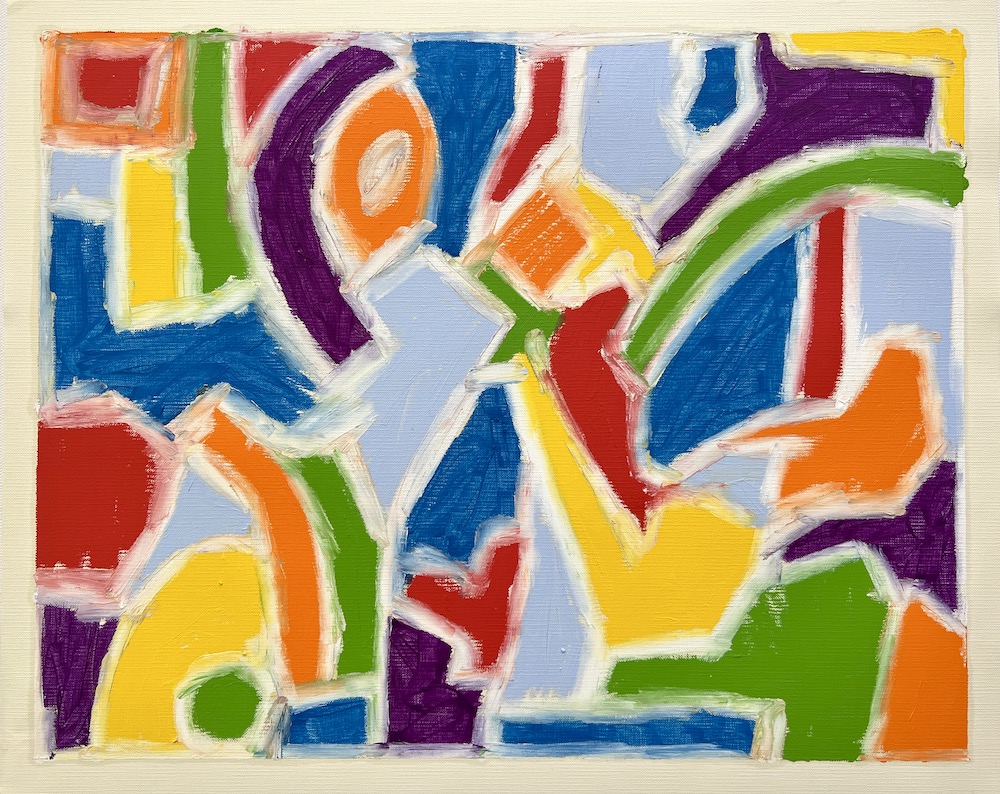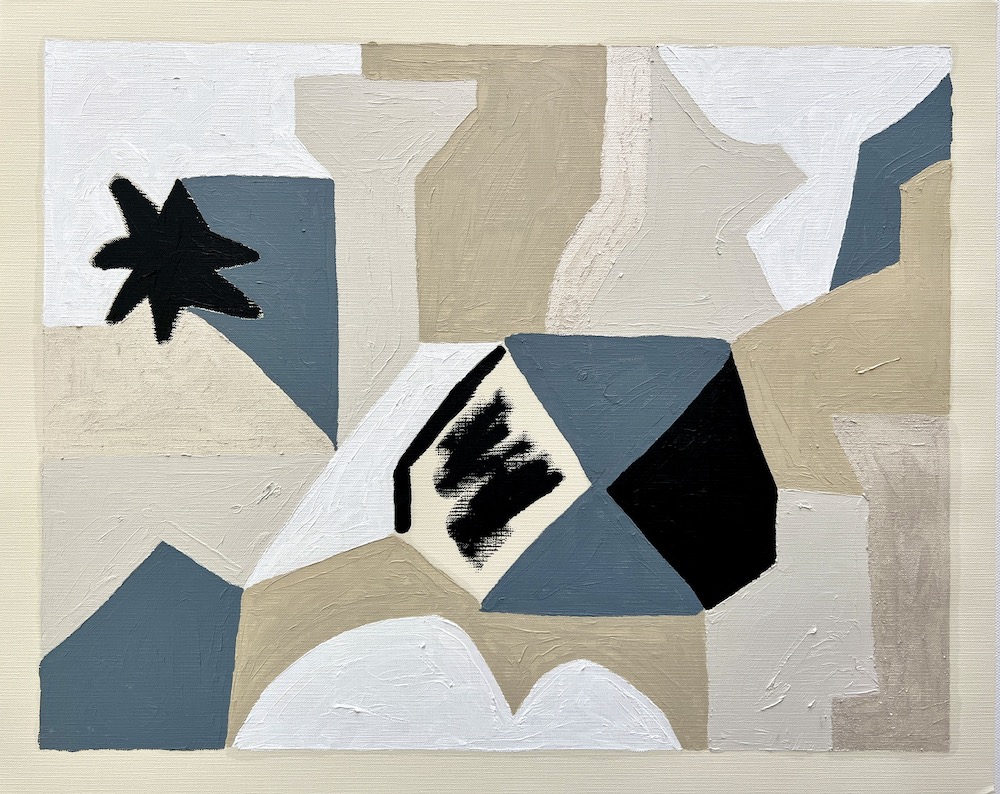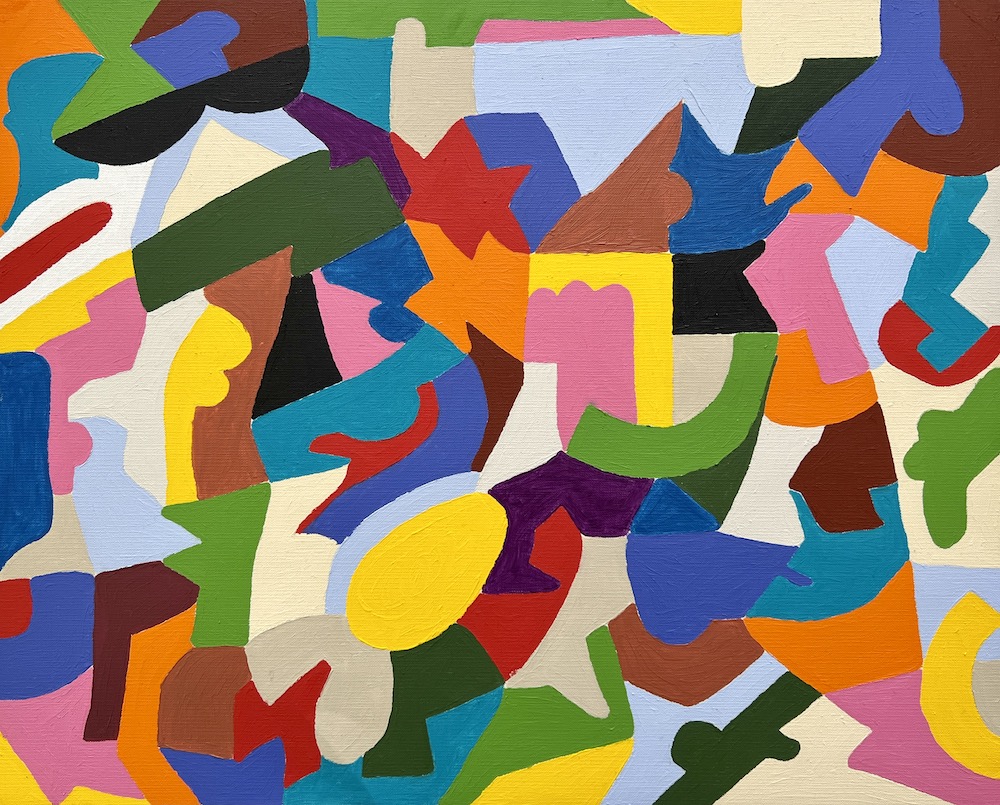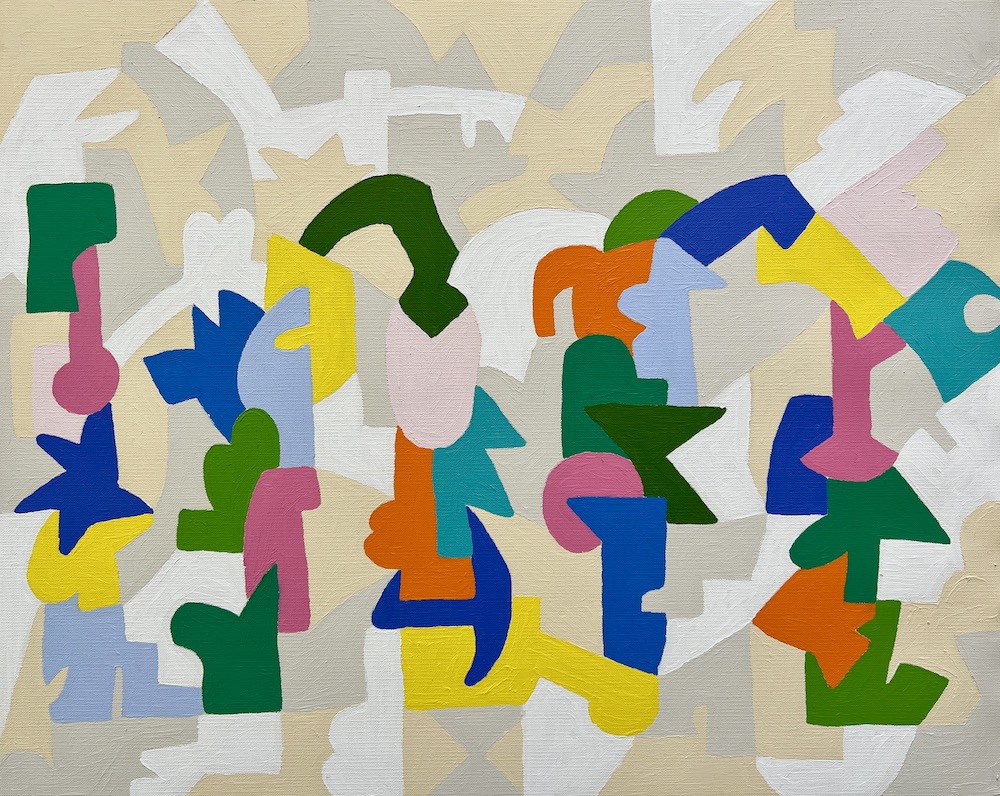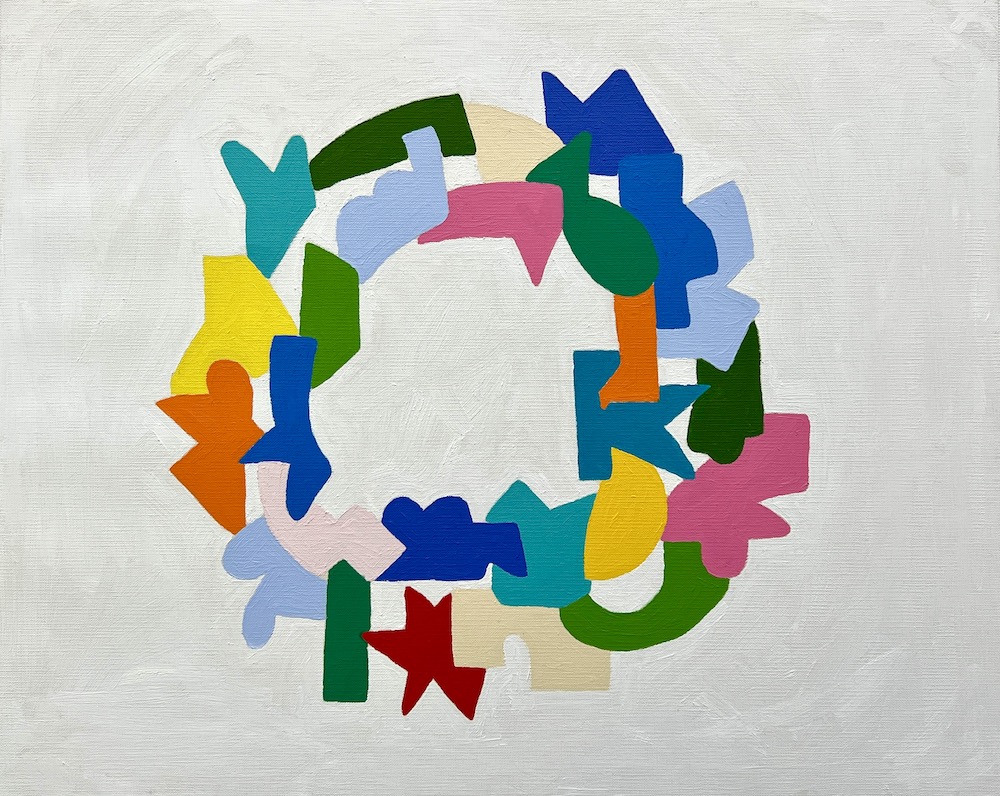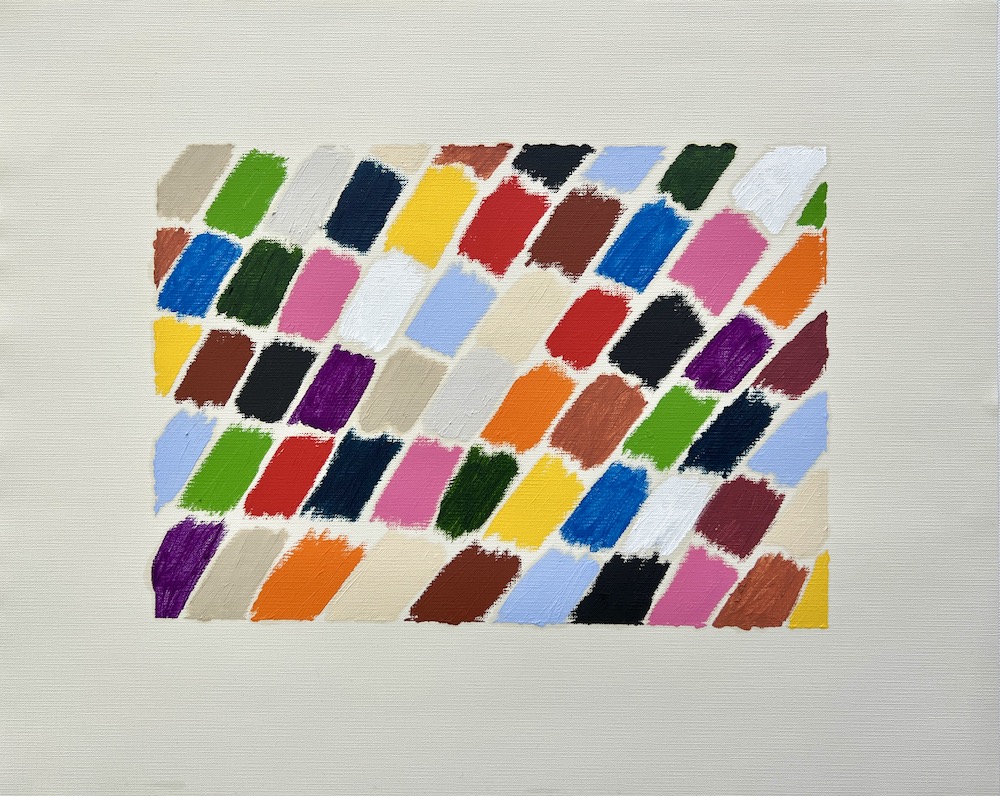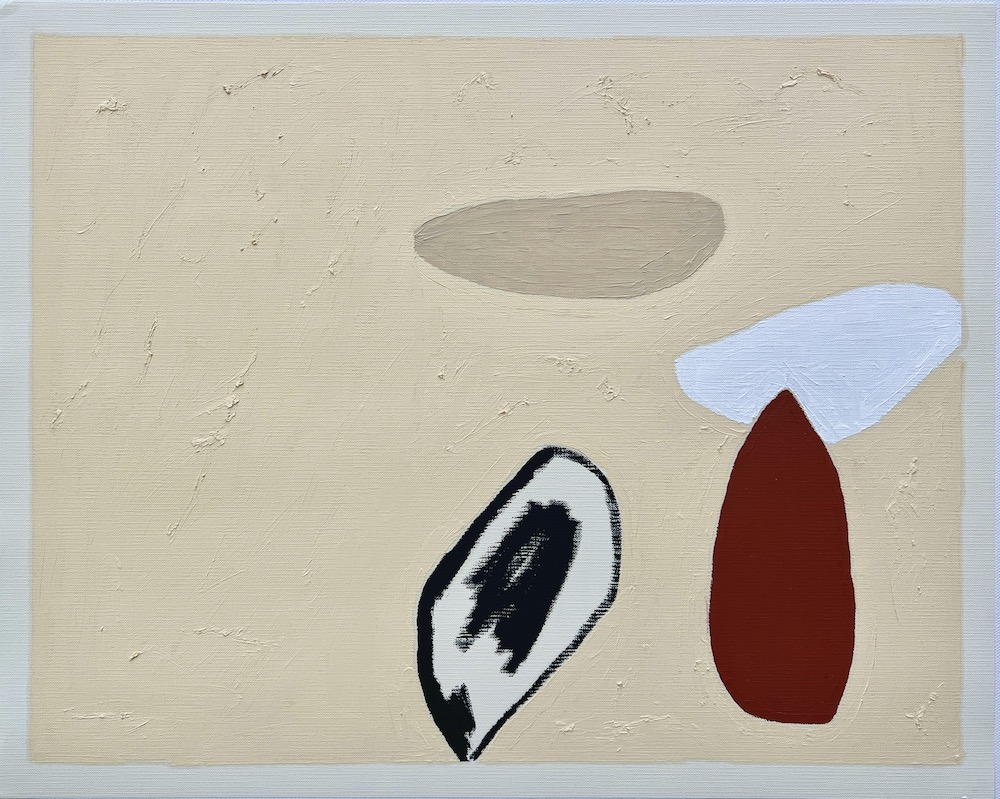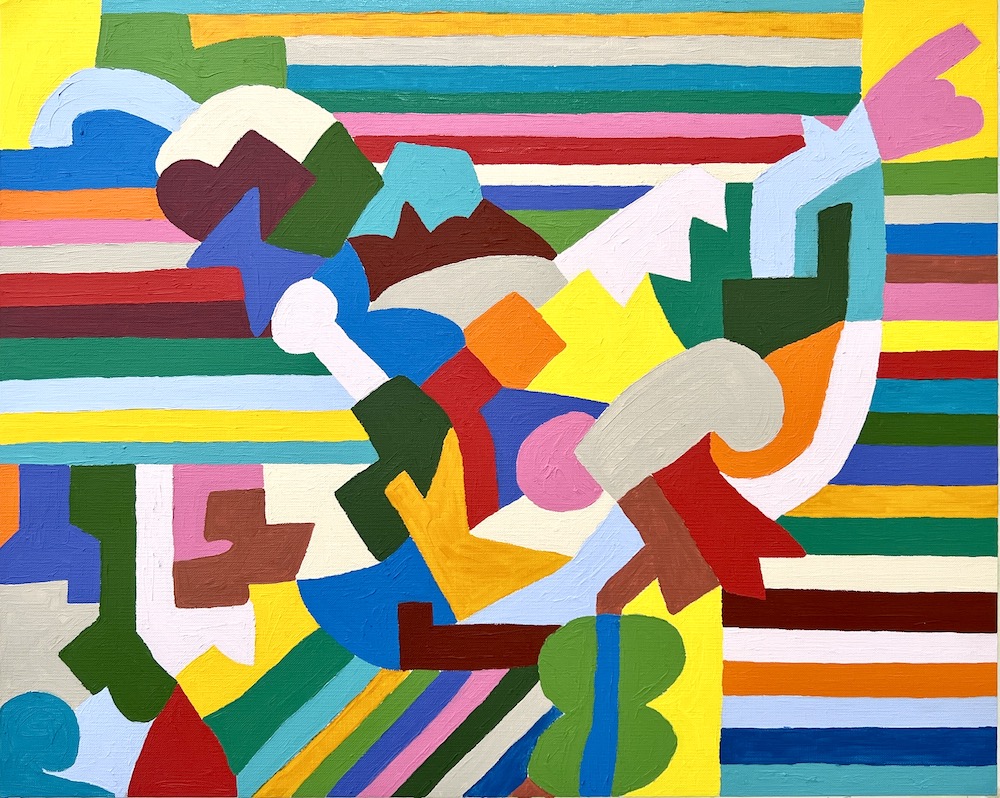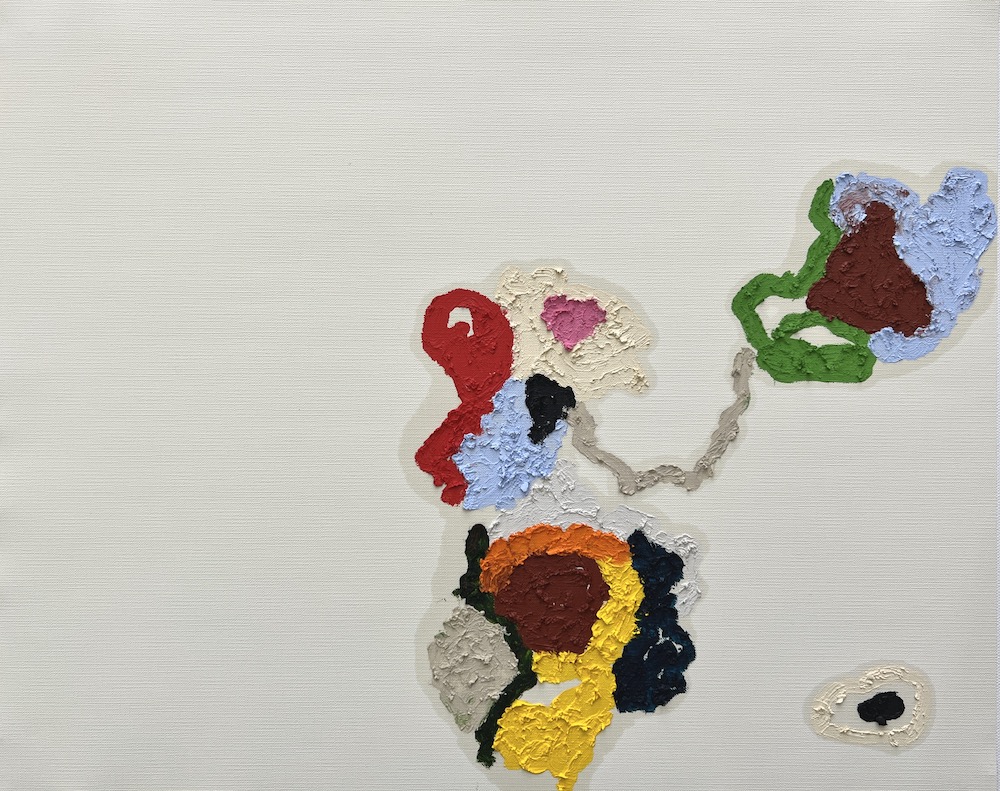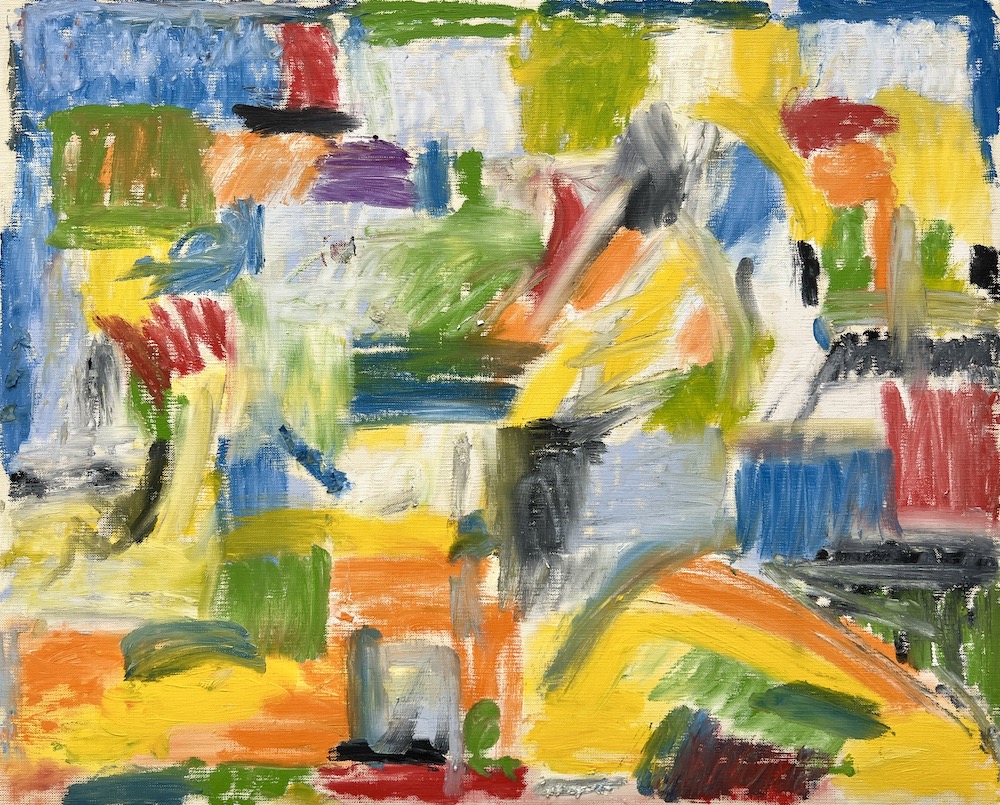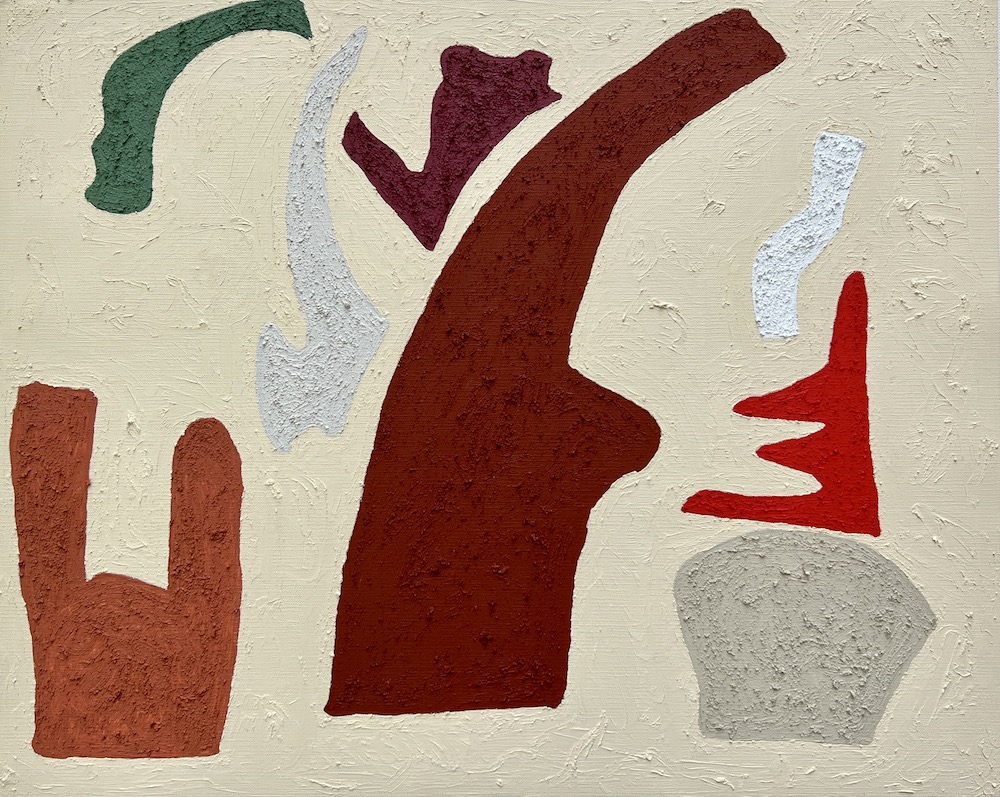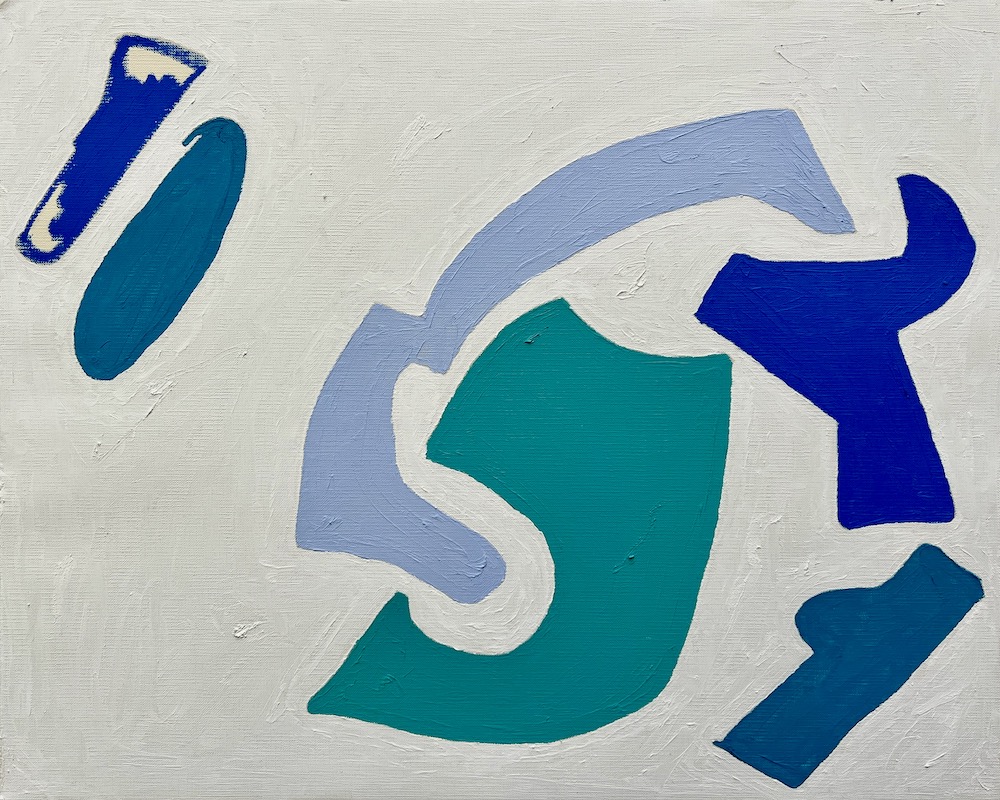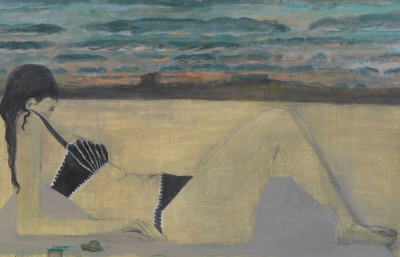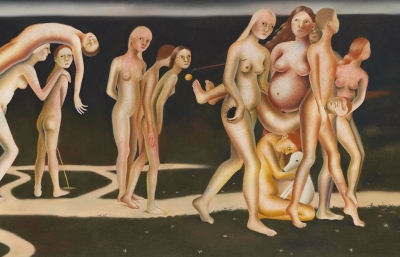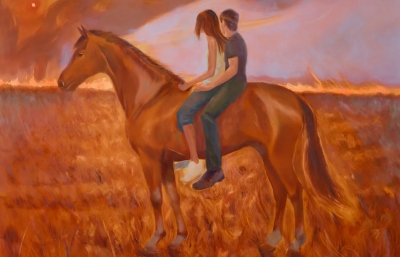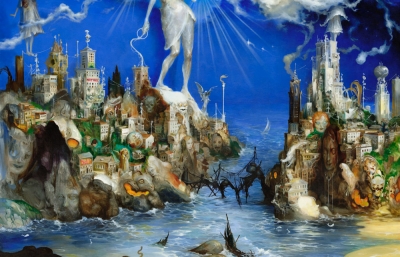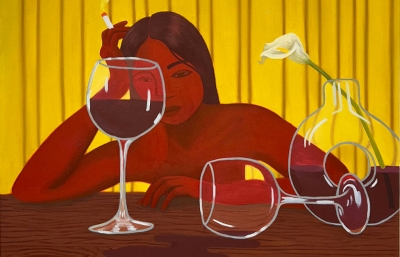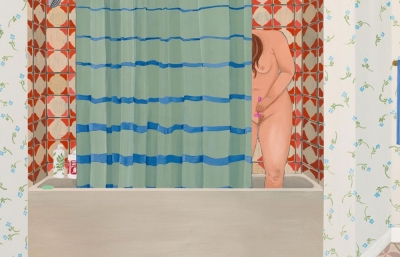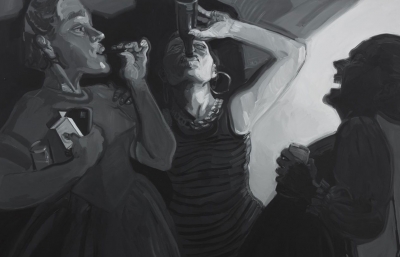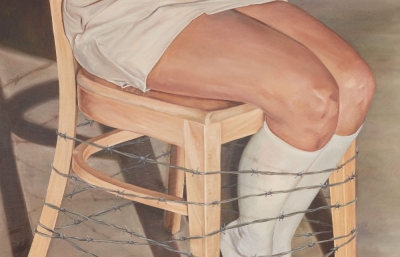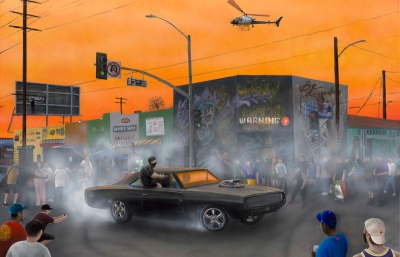Beginning Friday, this two day pop-up exhibition from September 29th to October 1st, 2023, at Upper Market Gallery in San Francisco opens its doors to an exploration of abstract expressionism with Michelle Fernandez's inaugural solo exhibition titled, 1956. In this vivid collection, Fernandez, an up and coming Bay Area artist, invites us to witness her exploration of the delicate balance between artistic freedom and the relinquishing of control, a theme profoundly intertwined with the complex emotions of grief and loss. With a palette of vivid colors, organic shapes, and a medley of oil stick on canvas paper and acrylic on canvas, Fernandez crafts compositions that transcend the canvas, offering viewers a chance to experience the interplay of color, composition, and rhythm. These artworks become melodies that decorate not only space but also time itself, weaving a poignant narrative that speaks to the depths of the human experience.
Fernandez's unique approach to each work in the exhibition is as fascinating as the artworks themselves. She embraces a philosophy that may seem counterintuitive to many—starting each piece with the assumption of failure. By liberating herself from the weight of expectation and the fear of making a wrong choice, Fernandez enters a creative realm unburdened by self-imposed constraints. After all, how can one be 'wrong' when they've already embraced the possibility of failure? This daring mindset is at the core of her artistic journey, and it resonates profoundly in the vibrancy of her creations.
Deeply influenced by the belief that abstract art should spring forth from the subconscious, Fernandez begins her artistic process by emptying her mind of preconceived notions and letting instinctual movements and preferences take the reins. This surrender to the intuitive is a hallmark of her artistic practice, and it's evident in the organic shapes and bold colors that define her works. Each brushstroke and application of color becomes a direct channel to her innermost emotions and creative energies, and viewers are invited to embark on this introspective voyage with her.
In '’Studio 80’' (mixed media on canvas, 30 x 30 inches, 2023), Fernandez's journey of artistic liberation continues. Here, she introduces objects onto the canvas to delve deeper into the texture of her work—a recurring thread stitching each piece together. Fernandez creatively incorporates cut-up paint tubes and caps, adding dimension and height to different sections of the painting. The spontaneity of these additions sometimes triggers self-doubt. Reflecting on this, Fernandez draws inspiration from Robert Rauschenberg's approach to art. Rauschenberg, known for infusing new elements into his work, collected items from daily walks in different NYC blocks to guarantee variation and dimension in his art. Fernandez finds motivation in this method, incorporating it into her artistic toolkit to further explore her connection with art and artistic expression as a whole.
A noteworthy aspect of Fernandez's artistic journey is the conscious ways she chooses to isolate herself from her artist husband, Emilio Villalba, during her creative process. Sharing a studio in North Beach, they both navigate the delicate balance of creative collaboration and personal artistic exploration. In the midst of their work, both artists often submerge themselves into their own worlds, donning airpods and a strong will to focus, while still peering over intermittently with admiration and curiosity at the others' progress. This may appear as a conscious distancing however, Fernandez also acknowledges the subtler influence of their shared creative environment. It's a testament to the interwoven nature of artistic relationships, where the echoes of one artist's bold textures may quietly reverberate in the delicate subtleties of another's work. Emilio, known for the thick, bold textures in his own paintings, undoubtedly leaves an indelible imprint on the artistic dialogue they share, whether consciously or through the intricate tapestry of their shared studio and living spaces.
Fernandez's technique and tools in creating her artworks demonstrate a meticulous yet flexible approach. Her chosen medium, oil sticks on canvas paper, as well as acrylic and mixed media on canvas, serves as her primary canvas for exploring the depths of her artistic expression. The juxtaposition of bold and subtle strokes, the layering of colors, and the introduction of various textures play pivotal roles in her creative process.
Yet, it is essential to recognize that '1956' extends far beyond the realm of technique and materials; it is deeply personal for Fernandez. The body of work on display is a testament to her journey through grief following the loss of two pregnancies. In the midst of profound emotional turmoil, Fernandez found solace and healing through her art. It was an unexpected rediscovery—a forgotten box of unused oil sticks, belonging to her husband, Emilio Villalba—that prompted her to embrace the medium, clueless to where it would take her in the end.
Artistic influences, both classical and contemporary, have left their indelible mark on Fernandez's creations. The echoes of artists like Cy Twombly and Wassily Kandinsky resonate in her earlier pieces that feature oil sticks. Fernandez also draws inspiration from an unfinished work by Lucian Freud, which she encountered at a Met Breuer exhibition in NYC in 2018. This encounter left an enduring impression, manifesting in her piece ‘'The Day I Fell In Love with Lucian Freud’’ (oil stick on canvas paper, 6 x 20 inches, 2023) where she masterfully incorporates play sand with her oil sticks, creating a tactile, rough texture. This integration serves as an homage to Freud's work, as well as a metaphor for the abrasive nature of life and the feeling of grief, akin to sandpaper against one's skin. The softness of the oil sticks provides a contrasting, gentler perspective—a reflection of the ebb and flow of human existence.
In a deliberate effort to keep the viewer as subjective as possible, Fernandez has chosen not to title the majority of her oil stick artworks with words, only numbers. She believes in allowing each viewer to experience her creations entirely on their terms, without the influence of preconceived titles. Just as she removes external prompts and references before beginning each piece, Fernandez aims to minimize any external influences that might steer the viewer's interpretation. For her, it's not about how the work is perceived but rather the deeply personal process of creating it. Through her exploration of color, composition and rhythm, she finds solace and healing in expressing her grief and navigating the path to recovery.
The title of the show, 1956, carries profound significance in Fernandez's journey of healing. In the year 1956, following the tragic death of Jackson Pollock, fellow artist and life partner Lee Krasner expressed the idea that 'painting is living.' Krasner's response to grief was to immerse herself in art as a means of survival. Fernandez's experience echoes this sentiment to some extent, as she, too, has found solace and healing through her artistic endeavors. —Kelly Jean Egan
Michelle Fernandez's '1956' is a raw exploration of art, instinct, and healing. If you're in the Bay Area, join her at Upper Market Gallery in San Francisco. The opening night on September 29th, from 6 - 9pm, promises an engaging introduction to the visceral work of a talented rising artist.



